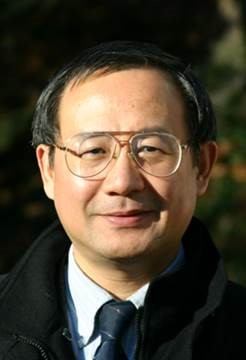|

Sammy Yukuan Lee Seminar
Friday, Nov 06, 2015
2:30 PM - 4:30 PM
Bunche Hall 10383
Seminar by Qianshen Bai
China by the late nineteenth century had been governed for centuries by a class of scholar-officials selected by a series of civil service examinations. Scholar-officials were both the nation’s political elite and men of letters(wenren, often translated as literati)who played important roles in the field of artistic production. They were at once the primary patrons of elite art and the elite artists who produced it – poets, calligraphers, and painters.
In the second half of the 19th century, imperial China encountered unprecedented crises in a new and challenging international environment. Many key economic and political changes took place in China at that time. In 1905, the civil service examination, the institutional foundation of the traditional scholar-official class and literati art, was abolished, and a modern educational system was introduced.
This research will attempt to answer several key questions. To what extent was art by scholar-officials of the second half of the nineteenth century a response to the challenges of the new international environment? What role did literati art play, if any, in projects to reform and modernize China? To what degree was their art transformed in its new social context? In what ways? | |
|

Sammy Yukuan Lee Lecture
Saturday, Nov 07, 2015
2:00 PM - 3:30 PM
Lenart Auditorium
Fowler Museum UCLA
RSVP HERE
Calligraphy and Everyday Life among Late Qing Officials
Utilizing diaries, letters, and other collections of informal jottings, this lecture describes and analyzes calligraphy in the everyday life of late Qing government officials. It deals with a number of issues, including the daily practice of calligraphy, calligraphies as gifts, fans and couplets as major calligraphic formats, the ways of maximizing the efficiency of calligraphic production to cope with an increasing demand for calligraphy caused by population growth, the taboo on selling calligraphy, and the relation between an economy of gifting and the acquisition of calligraphy. By these means, this lecture seeks to deepen our understanding of the cultural life of the Chinese elite toward the end of imperial China.
Prof. Qianshen Bai graduated with a bachelor’s degree from Peking University and a Ph.D. from Yale University. From 1997 to 2015 he taught at Boston University and became a professor of art history at Zhejiang University very recently. He is the author of Fu Shan’s World:The Transformation of Chinese Calligraphy in the Seventeenth Century. He is now conducting a research on Wu Dacheng, a government official, scholar, collector, and painter-calligrapher, in the late Qing dynasty. Professor Bai is also an accomplished calligrapher. | |

















